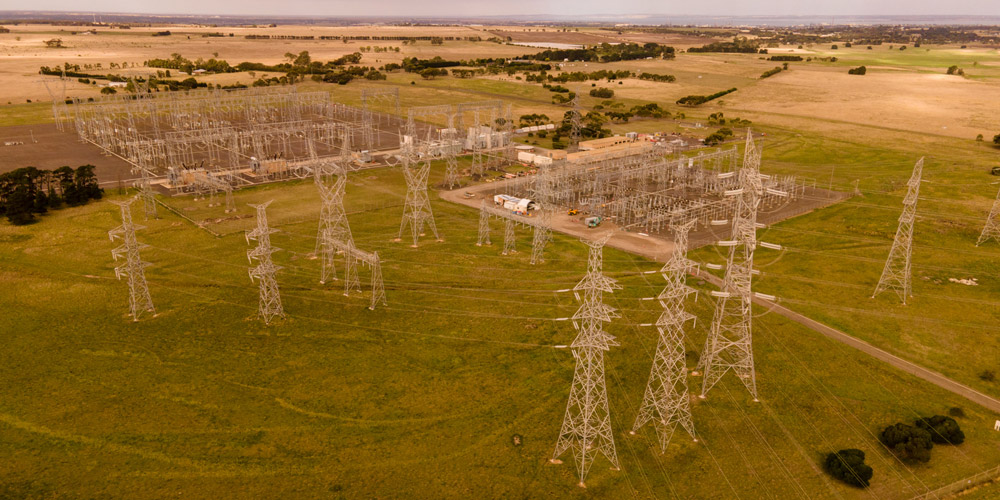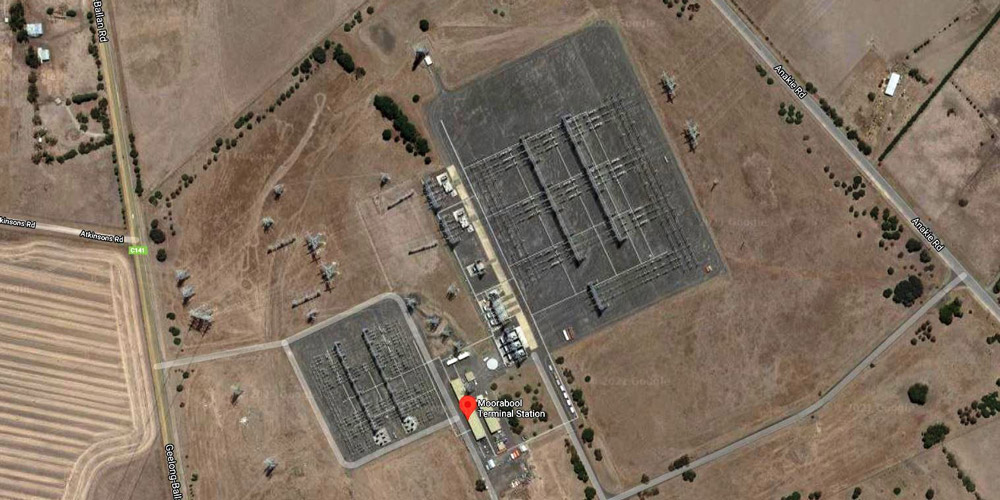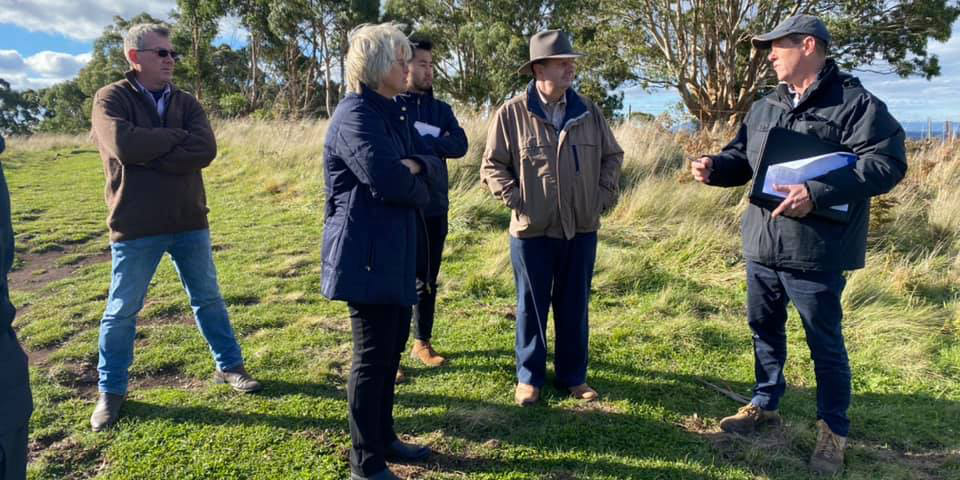Stop AusNet’s Towers Newsletter – May 2021

Save the Date – June 9
Take our Stop AusNet’s Towers Fight to Spring Street
A united community voice is what will win this campaign. It’s vital that the State Government to see and hear the sheer volume of our concerns in person on the steps of Parliament. Join us as we march on Spring Street on June 9th where we will take our Stop AusNet’s Towers Fight to Spring Street.
We need the support from as many people as possible so will be organising buses to make the trip into the CBD easier.
Stay tuned for more information.

Green energy initiatives rely on community backing to be successful
Whilst there is no argument about the benefits of green energy in transferring our country to a low carbon emissions future, one undeniable fact continues to be overlooked; successful projects are not just defined by shareholder returns or upgrades delivered, but by how well a project serves its community, now and into the future.
On the back of COVID, interrupted supply chains, threatened job security, and general unease, now more than ever, Australians deserve a level of transparency and honest communication about projects designed to deliver a positive energy future.
Green initiatives that divide a community, damage local businesses, and leave a dirty mark on pristine natural environments are rapidly becoming a bugbear for local, state, and federal governments charged with delivering on the nation’s green objectives.
And with good reason. Delivering any project in the current climate that damages harvestable land, destroys businesses, and negatively impacts regional communities needs further investigation.
While environmental concerns and the science can be debated from both sides, one thing cannot; The Western Victoria Transmission Network Project and its project operators, Ausnet, and AEMO must earn their social license to operate in the communities they serve.
So what is SLO? (Social license to operate)
When an impacted community agrees or approves of company operations (subject to relevant industry regulations) within their area, it’s called a “social license to operate”.
While it’s an informal agreement between a community and a company, the impact can’t be underestimated.
Positive sentiment and community buy-in can be the difference between a successfully delivered project, as opposed to one that is addled with objections, cease-works, and delayed delivery.
To gain social license the proponent must address and suitably mitigate community concerns.
Does AusNet have a Social License to Operate (SLO) in Western Victoria?
In short, NO.
From the outset, the WVTNP has faced community backlash. WVTNP Project Operator AusNet has conducted their community consultations abysmally. Session details have been hard to find, representatives of AusNet have been purposely opaque and downright dishonest in their responses and lacking in providing helpful information.
Our community is disengaged, largely distrustful, and opposed to the project scope as it currently stands.
Negative sentiment is so high that impacted landowners have formed their own alliances to get better informed and to demand the proposed project corridors and infrastructure be reviewed and replaced with underground lines along existing easements.
What happens when a company loses its social license to operate?
While once considered a flowery concept, “social license to operate” is a real and measurable business responsibility which if not taken seriously can impact the bottom line. We’re talking about a reduction in company value, negative brand impact, or a shutdown of operations. It’s a costly mistake for companies to make.
As our population increases and energy infrastructure needs to scale up to meet demand, these types of David and Goliath battles will become common place.
Make no mistake, what we do here matters- it will set the scene for many other similar projects and similarly affected communities across the nation.
The project must make significant changes in all of their processes in order to regain social license in the renewable energy sector to deliver a positive return for those within the impacted area and its stakeholders.
When social license is lost, social resistance has won.
“AusNet needs to do better, the government needs to pay attention, and all behind the project need to get it right. If they don’t, the social licence of renewables will be significantly harmed.” Catherine King MP Member for Ballarat
What does that mean for supporters of the STOP AUSNET’S TOWERS CAMPAIGN?
It means now, more than ever, EVERY VOICE COUNTS and can be the difference between this poorly planned and assessed project forging ahead vs returning to the drawing board and coming up with a better, more sustainable option for everyone.
GET INVOLVED
- Be ready to start conversations with family and friends. Get informed about the project.
- Follow STOP AUSNET’S TOWERS on social media; like, share, start conversations. The more noise, the higher reach for this critical campaign. https://www.facebook.com/MCHPoweralliance
- Visit stopausnetstowers.com to donate to help us cover the costs for expert advice as we fight AUSNET and Write a letter to your local representatives using our prefilled out templates.
- Sign the petition and let AusNet know that we want to go “Green and Unseen”.
- Hang a sign on your property to demonstrate our community unity and let AUSNET know that we won’t be bullied.


North Ballarat Terminal Station
This huge piece of industrial infrastructure is a critical part of the Western Victoria Transmission Network Project (WVTNP). It is proposed to be constructed adjacent to the existing 220kV transmission line easement that runs from the Ballarat Terminal Station in Warenheip northwards up to Bendigo.
Online sessions held by AusNet in July last year stated that the footprint of the Terminal Station was to be some 350m x 550m but another statement (made later in person by a senior AusNet employee) was that it would have a footprint of 400m x 600m. This makes the footprint some 19ha (47 acres) to 24ha (59 acres) in size which is some 10 to 12 times the size of the MCG playing field (2ha or 4.9 acres).
From the beginning, AusNet identified an approximately 25km length of this easement, running through the Shires of Moorabool and Hepburn between Leigh’s Creek and Blampied, as the ‘investigation zone’ for the location of the North Ballarat Terminal Station. Information on where they focussed these investigations has been hard to come by, but it appears they have been looking at a number of sites in Pootilla, Dean, and at the moment are specifically investigating a site in Mount Prospect. We should not be lulled into a sense of false security though that they will not look elsewhere if preliminary investigations of this site reveal insurmountable issues to using it as a location for the Terminal Station.
It is important to realise that the Terminal Station is not only integral to the WVTNP but is also intended to be used as part of a new 500kV electricity transmission interconnector between Victoria and NSW called VNI West – in November a Memorandum of Understanding agreement was made between the Victorian and Commonwealth governments to support the development of VNI West via KerangLink. More recently it has been identified as an integral part of the newly released State government and AEMO initiative to develop Renewable Energy Zones throughout the state and grid them together with transmission lines. This is to be managed by a new body soon to be established called VicGrid.
Two of the proposed projects to be undertaken by VicGrid include uprating the proposed western 220kV section of the WVTNP to 500kV before it is even built and later bringing a 500kV line from Mortlake to the proposed North Ballarat Terminal Station via the Ballarat Terminal Station – putting the ‘grid’ into VicGrid. The potential for this Terminal Station to host a pinwheel of transmission lines heading in all directions is too great to ignore.
If you want to learn more about VNI-West visit here: https://aemo.com.au/en/initiatives/major-programs/victoria-to-new-south-wales-interconnector-west-regulatory-investment-test-for-transmission
If you want to learn more about the ‘Renewable Energy Zone Development Plan’ visit here: https://www.energy.vic.gov.au/renewable-energy/renewable-energy-zones
If you want to see the Keilor Terminal Station up close in video see here: https://www.youtube.com/watch?v=ucAogBK_Gfs (a bit shaky but worth persevering)
Pictures: Moorabool Terminal Station near Geelong clipped from Google – Planned Terminal Station will be significantly larger

Meeting with Andrew Dyer
The MCPHA took the Australian Energy Infrastructure Commissioner, Mr Andrew Dyer on a tour of the area of interest. He saw the landscape from Plumpton to Waubra and heard our concerns.
The Commissioner will work collaboratively with all levels of government, scientists, experts, industry and the community to resolve complaints from community members about proposed and operational wind farms, large scale solar farms (5 MW or more), storage facilities, such as large scale batteries (1 MW or more) and new major transmission projects.
The Commissioner will refer complaints about wind farms, large scale solar farms, storage facilities and new major transmission projects to relevant authorities and help ensure that they are properly addressed.
Thank you for coming and listening and thank you to the community members who met with him.
To receive this newsletter in your inbox, visit here to subscribe.

ABOUT US
Stop Labor’s Towers is demanding better consultation and a genuine process to consider alternatives.
The Regional Victoria Power Alliance comprises landowners, residents and community group concerned about the impacts of this project on our lives, land, environment, community and future generations.